
Innovating the Future: Unleashing Creative Solutions for a Better Tomorrow.
Innovating the Future: Unleashing Creative Solutions for a Better Tomorrow.
Combined use of several NOH2O® injection techniques for positive-side, curtain grouting to remediate water leaks through liner sections, joints and bolts
NOH2O® successfully formed a waterproofing membrane in the annular space between inner steel and outer concrete tunnel lining
Sovereign was tasked to demonstrate through a field trial that NOH2O® could provide cost- effective sealing of voids at the interface between the steel liner and outer concrete components of the tunnel structure to mitigate water infiltration.
Sovereign designed a demonstration project employing curtain grouting, injection of NOH2O® through our specially designed bolts, sealing of joints between steel liner segments, and grout data management and reporting. Sovereign also included an emergency grouting plan if water ingress at any location exceeded a pre-determined threshold value.
Sovereign performed curtain grouting of the steel tunnel liner and the concrete interface between Station Mk. 56+25 and 56+45 in the Inbound Track (L1) of the Yellow line. Our methods included careful drilling and documentation of grout holes, pre-grouting dye testing, injection of NOH2O® through grout holes, specially-designed bolts and ports created at steel liner joints. A record book containing detailed grouting data was made available to WMATA during and after the successful trial program.

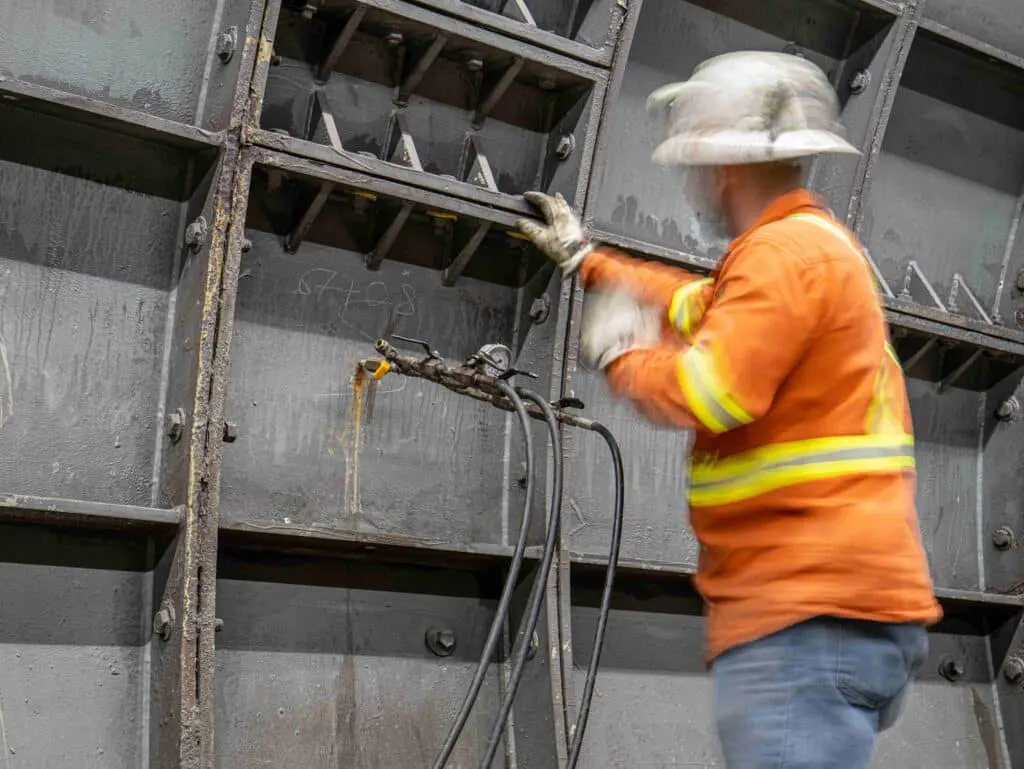
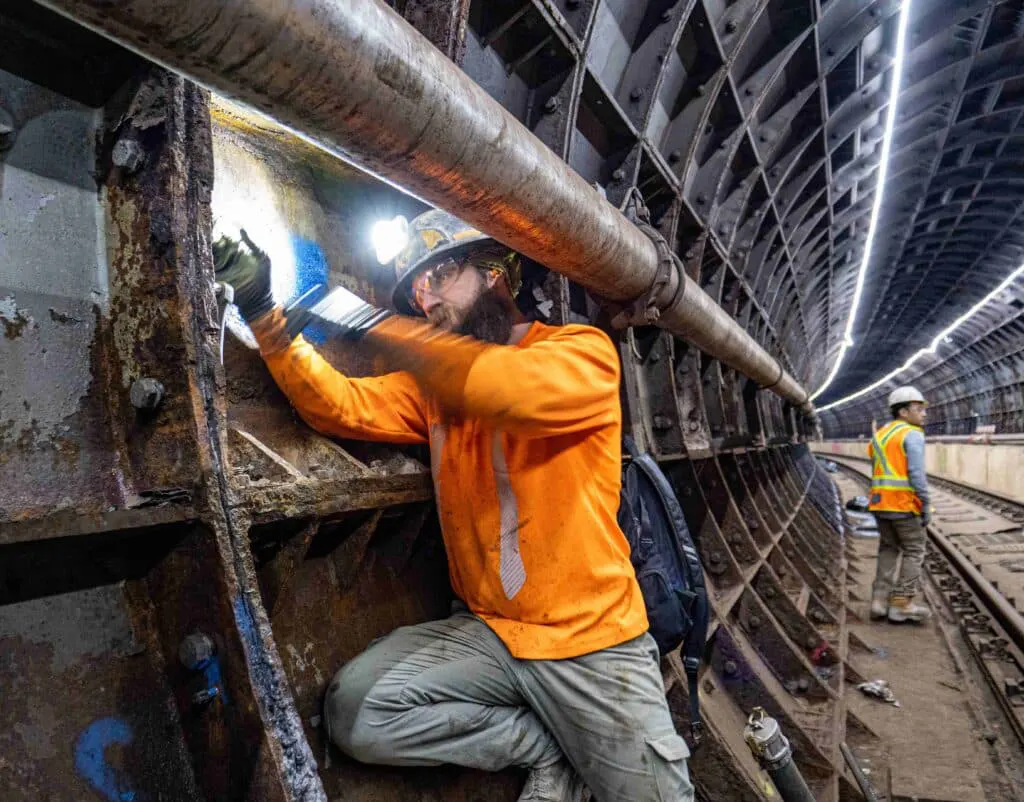
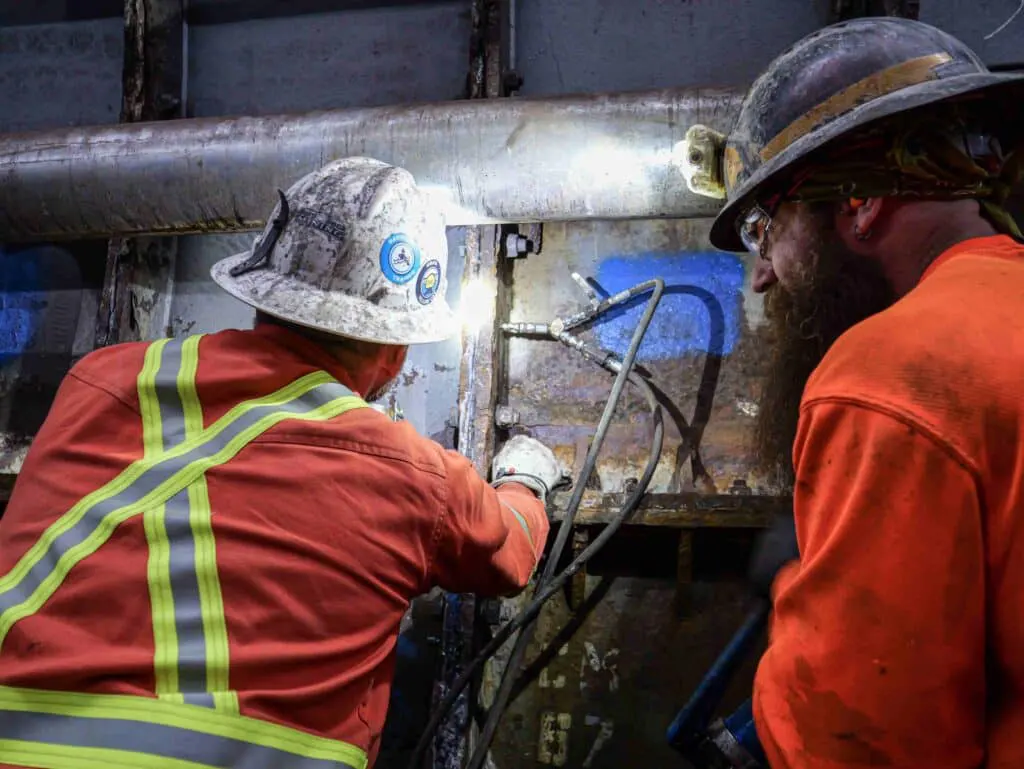
For more information

Jet-Grouting Program in Complex Geology
Cut-Off Wall Constructed to Depths of up to 60 Feet
3800 Linear Feet of Cut-Off Wall Constructed
The project required Design and construction of a water cut-off wall ranging up to 60 feet in depth using jet-grouting technology in complex geology that contained organic soil, peat layers, the presence of bio-fluids and natural obstructions.
Sovereign developed a plan using a combination of 3-foot and 5-foot diameter jet grouting columns to create the cut-off wall filling in between existing piles and adjacent to critical transit structures.
Work was completed between 2019 and 2022. Sovereign successfully created 3,800 linear feet of water cut-off wall.
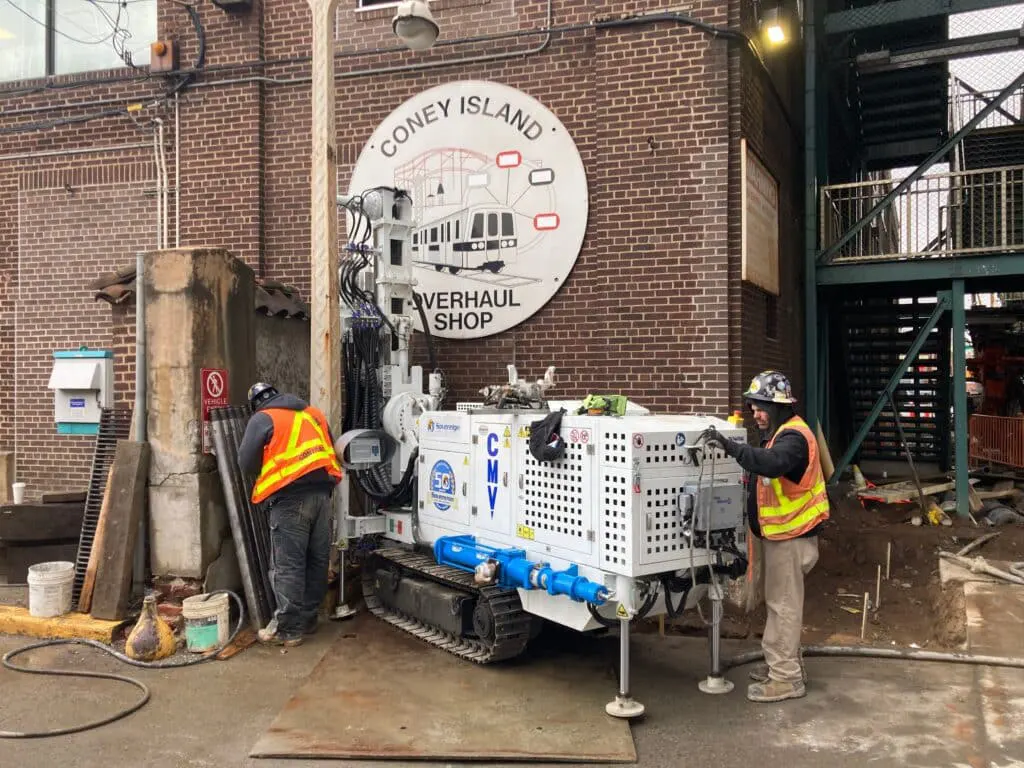
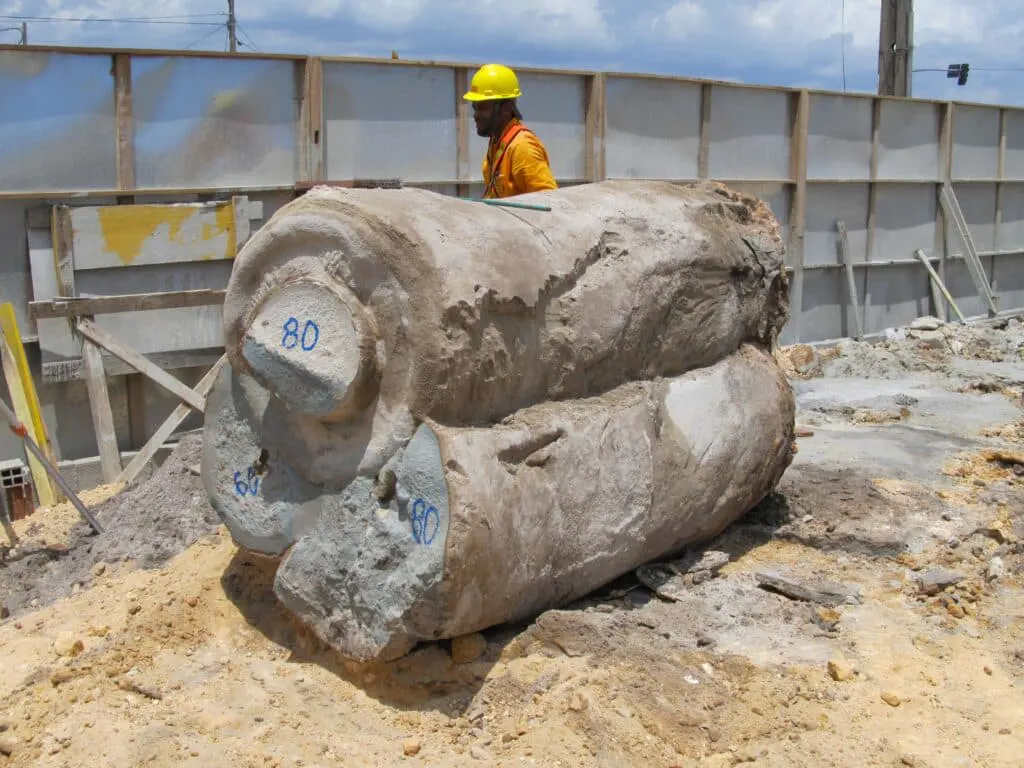
For more information


Application of NOH2O® as a Positive Side / Curtain Grouting for leak Remediation
NOH2O® forms a waterproofing membrane above the Station roof structure in the Mezzanine Public area
Schedule driven performance to ensure execution before substantial completion
Provide 10-Year Warranty
92nd Street Station on the Second Avenue Subway Line was opened to the public in 2017, but the roof structure in the Mezzanine public zone was plagued by significant water infiltration. Several unsuccessful chemical grouting attempts were made by MTA C&D prior to tasking Sovereign to remediate leaks through the roof structure in the public zone. The area treated included the roof of the public area between the W30 Architectural walls from column line 15 to column line 22.
Client – MTA Construction & Development (MTA C&D)
Contract Number – MC-881A Task Order # 1
Project Start – October 2019
Project End – August 2020
Sovereign was tasked to design and implement an effective solution. Following research and development, Sovereign designed a leak program using NOH2O® to create a new waterproofing membrane above the roof employing positive-side grout application. Several tests were then performed to confirm successful spread of grout over the treated area.
Work was successfully completed on schedule, followed by a period of observation of the treated area conducted jointly with MTA C&D. The treated areas were cleaned and painted before the final acceptance walkthrough and completion of the project. NOH2O® successfully formed waterproofing membrane above the roof structure, rendering the treated areas dry.

For more information

Application of NOH2O® for Positive-Side Curtain Grouting for Leak Remediation
NOH2O® Formed a Waterproof Membrane behind and beneath a Wet Storage Room Area of an Underground Parking Garage
Provided a 3-Year Warranty for the Treated Area
The underground parking garage of River Landing is plagued with water ingress from both the floor and walls. Sovereign was tasked to perform a leak mitigation trial program in a storage room area. The storage room had experienced continuous water ingress; frequent attempts were made previously by others to manage the water using pumps.
Application of NOH2O® for positive-side curtain grouting was successfully demonstrated, and the area was observed to be free of water ingress immediately.
Client – River Landing LLC
Contract Name – River Landing Underground Facility Trial Program
Trial Program Start – June 2, 2022
Trial Program End – June 11, 2022
Sovereign was tasked to design and implement an effective solution. Following research and development, Sovereign designed a 3-phase leak mitigation program using NOH2O® to seal the water intrusion behind the floors and walls employing positive-side grout application to repair defects in the existing waterproofing membrane. The trial program was executed to confirm the efficacy of Sovereign’s application methods and grout.
Drilling Phase
Four holes were cored on the floor slab to determine existing construction details and required depth of waterproofing. Holes F1 and F2 were drilled to 24” depth before intercepting the existing waterproof membrane. Holes F3 and F4 were drilled to 30” depth to the existing waterproof membrane. At the completion of drilling hole F3 and F4, the driller did not perceive any subsurface resistance to advancement of the drills string indicating presence of voids.
Hole F3 exhibited approximately 12” of water head pressure above the floor, and hole F4 had approximately 48” of water head pressure above the floor.
Three additional holes were cored along the floor–wall joint. Holes J1, J2 and J3 were drilled at a 45° angle at a height of 20” above the floor level to intersect the floor – wall joint.
Two separate holes were cored through walls of the structure. Holes W1 and W2 were drilled on the north and east wall (ramp side) respectively approximately 24” above floor level. Sovereign drilled to 30” to intercept the existing waterproof membrane on both holes.
Dye injection
Sovereign’s standard procedure to map water flow patterns before initiating grout injection involves injection of dye water. Dye injection through floor hole F1 reported to floor holes F3 and F4. Dye also reported to floor-joint holes J1 and J3 located along the floor-wall joint on the east side of the trial area.
Trial Program Grouting
Grouting was performed in sequence starting through the floor holes, then the wall holes, then finally the floor-wall joint holes. Communication was established between the injection holes and other holes as well as through localized floor fractures. Sovereign observed the path of least resistance to grout migration continuously changing during the grouting process.
Post-grouting observations performed jointly by Sovereign and the client demonstrated that the treated area was now dry. were cleaned and observed to be dry post grouting period.
Sovereign observed the depth to the original waterproofing membrane to be variable.
Large pockets of water under hydrostatic pressure were encountered. Sovereign advised that the pockets be treated in their entirety to sustain the intended design life of the structure.
Injection of Ordinary Portland Cement (OPC) was recommended to cost-effectively fill any larger voids before introducing NOH2O® during future grouting programs designed to remediate leaks affecting the entire underground facility.
NOH2O® injection successfully repaired the waterproofing membrane behind the structure, rendering the test area dry.
For more information

Combined use of NOH2O® and Ordinary Portland Cement (OPC) for positive-side, curtain grouting, leak remediation
NOH2O® formed a waterproofing membrane along the outer boundary of a utility tunnel
Schedule-driven performance to ensure completion in time for the summer holiday season
The Verrazzano Narrows Bridge Toll Plaza Utility Tunnel has suffered significant water infiltration since its construction As part of an overall bridge rehabilitation program, Sovereign was tasked to ensure the Toll Plaza Utility Tunnel provides a long-term dry environment for existing and future communication, surveillance, and power systems.
Sovereign was tasked to design a cost-effective solution and, based on extensive research and development, developed a plan for combined use of OPC and NOH2O® for cost-effective sealing of voids at the interface between the outside of the tunnel structure and surrounding soils/rock to mitigate water infiltration.
Work was successfully completed in 12 weeks, in time for the summer holiday season. OPC cost-effectively filling excess void space behind the concrete tunnel structure, providing a better-defined pathway within which the NOH2O® waterproofing membrane was injected and solidified, rendering the tunnel dry.
For more information

Sibanye-Stillwater selected a test section in the Benbow Decline to demonstrate the effectiveness of Sovereign’s proprietary NOH2O® water-sealing grout and injection methods. The test grouting was performed to determine Sovereign’s ability to assist the mine development contractor in maintaining a net water inflow of <100 gallons per minute (gpm) into the decline while excavating the remaining 2,400 feet.
After mobilizing to the site on March 13, 2020 and as directed by Sibanye-Stillwater, the mine development contractor commenced drilling a number of holes in the decline ranging in depth from 60-80 feet in an effort to intersect the source of inflowing water. Observed water inflows ranged from 2–109 gpm at pressures of 200–350 pounds per square inch (psi). Hydraulic connections between grout holes and specific mine leaks were mapped by injecting dye into the grout holes and observing dye reporting through fractured strata in the walls of the decline. These observations were then used to make specific decisions in the field on where to inject grout.
The total water inflow of approximately 105 gpm into the 90-foot-long test section measured at the start of the grouting program was reduced to 40-45 gpm by March 23, 2020. As conveyed in a conference call at the end of the program, the mine development contractor and Sibanye-Stillwater concluded that the trial was successful, and the team was extremely satisfied with Sovereign’s overall performance.
For more information

In 2017 a new shaft was being constructed in a mine in Poland. The shaft was being sunk at 8.7m diameter by conventional blind sinking methods. The shaft sink was at around 1067m deep and, while conducting standard probe drilling in advance of the shaft floor, the probe holes intersected very high pressure – high inflow rate water. This water inflow was up to 1800L per minute with a static pressure of 75bar. The water was 47°C, highly mineralized and brought with it toxic concentrations of H2S gas. The water and gas were contained in a fairly well-defined 5m thick dolomite rock layer (the aquifer) at approx. 28-33m below the shaft floor. The shaft sink could not continue through this saline aquifer without first sealing the water and gas inflows.
For the next 18 months, the shaft-sinking contractor tried diligently to seal this aquifer by using a variety of different grout products from within the shaft and from the surface. This water-sealing effort had a massive impact on the project financially, and the construction schedule was 1.5 years behind schedule which also had an impact on the mine operator.
Ordinary Portland Cement (OPC) and some 15 different grout products such as ultra fine, resins, polyurethanes, acrylics were tried and all had little to no effect as the dolomite rock mass was very tight, and the static head pressure would eject the grout projects before they could take effect.
In January 2019, the shaft-sinking contractor contacted Sovereign Hydroseal to see if its proprietary grouting technology could successfully control the shaft water. An inspection was conducted by Sovereign in February 2019, and an NOH2O® grouting trial program was negotiated. Sovereign mobilized staff from Australia, the U.S. and South Africa and equipment and grout products from the United States and Australia in April 2019. In less than 4 weeks the water and gas inflow had been sealed to well below the required minimum with only the trial volume of grout products used.
For more information

Sovereign performed grouting of the Synclinorium Primary Ventilation Shaft at Kitwe, Zambia. This shaft was designed and constructed with the ventilation fans installed at the surface. There was water ingress into the shaft at various horizons in the upper 120m from surface, and the total inflow was originally estimated to be in the volume of 5000 liters per hour. The water entering the shaft had a very corrosive effect on the fan steelwork, and therefore was detrimental to the performance and the projected life span of the fans.
Sovereign designed a drilling and grouting program involving vertical holes drilled at locations outside of the shaft that intercepted the water leaks without removing of any of the fan infrastructure.
A shaft camera survey was performed to determine target drilling depths and a total water inflow water measurement was made prior to commencement of grouting. The actual water ingress into the shaft was measured at 10,130 liters per hour, more than double the 5000 liters per hour anticipated prior to the time of construction.
Upon completion of the grouting program the final water ingress measured at the bottom of the shaft was 82 liters per hour, better than a 99% reduction!
Drilling and grouting was carried out over a 90-day, incident-free period via down-stage pressure-grouting through 12 vertical diamond-drilled holes using a combination of Sovereign’s proprietary NOH2O® grout and Ordinary Portland Cement grout.
For more information

Leak remediation with NOH2O® in historically protected surroundings
Minimal impact to the traveling public
Permanent leak remediation in areas with high foot traffic
Boston’s MBTA Wayfinding Improvement and Station Rehabilitation program called for leak remediation at several underground subway stations below and adjacent to historical buildings and structures. Downtown Crossing, China Town, State Street and Haymarket Stations have several entrances as well as below-grade passageways and stairways that connect the Orange, Red, Blue and Green subway lines. Water leaks have resulted in partial closures of these passageways and stairways during and after rain events.
Sovereign conducted individual site investigations and historical research to develop a multi-phased plan to stop water infiltration into areas which have high public access that were pre-selected by the MBTA.
All pre-selected areas were treated with NOH2O® which created an impermeable water barrier along the outer boundaries of the targeted structures, at interfaces between adjacent structures, as well as selected areas where single point grout injections were completed to ensure that the client’s expectations were exceeded.
For more information

NOH2O® provides permanent leak remediation
Performance is warrantied
Minimal impact to station operations – zero impact to revenue service
NOH2O® yields success after previous grouting attempts by others failed
NYCT’s 34th Street -Hudson Yards Subway Station, which opened to the public in September 2015, was plagued by water infiltration very shortly after its opening. The water leaks impacted the operation of escalators, created slippery walking surfaces and damaged architectural finishes. In 2016, Sovereign was tasked to design a solution involving application of NOH2O® to mitigate impacts to the station’s operation and the unsightly conditions.
Sovereign developed a two-phase approach/plan. Phase 1 focused on treatment of areas accessible and visible to the public. Phase 2 addressed leaks in the non-public concourse areas and a ventilation shaft.
Phase 1, completed in 6 weeks by working 12-hour night shifts, reduced impacts to the public while the Station remained in service throughout the program. Phase 2 was completed in 8 weeks, with work shifts varying between day and night shifts.
The initially-planned duration of the leak remediation work (6 months) was shortened to 3 months.
34th Street – Hudson Yards Station is free of unwanted water infiltration.
For more information

First MTA/NYCT application of NOH2O® for positive-side, curtain grouting
NOH2O® formed a waterproofing membrane along the outer boundaries of the station and tunnel structures
Project completed 4 months ahead of schedule improvement allowing early start of architectural finishes work and systems installation
NOH2O® was selected over 6 other competing leak mitigation products
The South Ferry Terminal Complex was severely damaged by Superstorm Sandy in 2012. As a result of the Station being entirely submerged in saltwater, the entire Station underwent a total makeover. Prior to this event, Station enhancements had been completed in 2009. However, water infiltration remained a problem. In 2015, Sovereign was tasked to design a solution utilizing NOH2O® to mitigate water infiltration and ensure a dry Station.
Sovereign developed a two-phase approach/plan. Phase 1 treated the entire Station cut & cover box, and Phase 2 focused on the adjacent facility rooms and tunnels.
Phase 1 was completed in 8 weeks. Phase 2 was completed in 12 weeks. Work was completed during both day and night shifts. The application of NOH2O® successfully formed a membrane along the outside of the station and tunnel structures, rendering them dry.
For more information

NOH2O® was proposed and accepted as an “or equal” product for the contracted leak mitigation program which included traditional leak mitigation and crack repair services. The Montague Tunnel, approximately 12,000 LF, includes reaches of cast-in-place liner and reaches of cast iron segments with an inner cast-in-place concrete protective lining. Reaches of cast-in-place liner were drilled with holes through the tunnel concrete liner to the surrounding rock, which were then injected with NOH2O® grout. Leaks in the cast iron segments were addressed by replacing standard bolts from the cast iron segments with patented injectable bolts. These bolts were injected with NOH2O® grout to seal the bolts and segment joints. The dryness criteria were achieved.
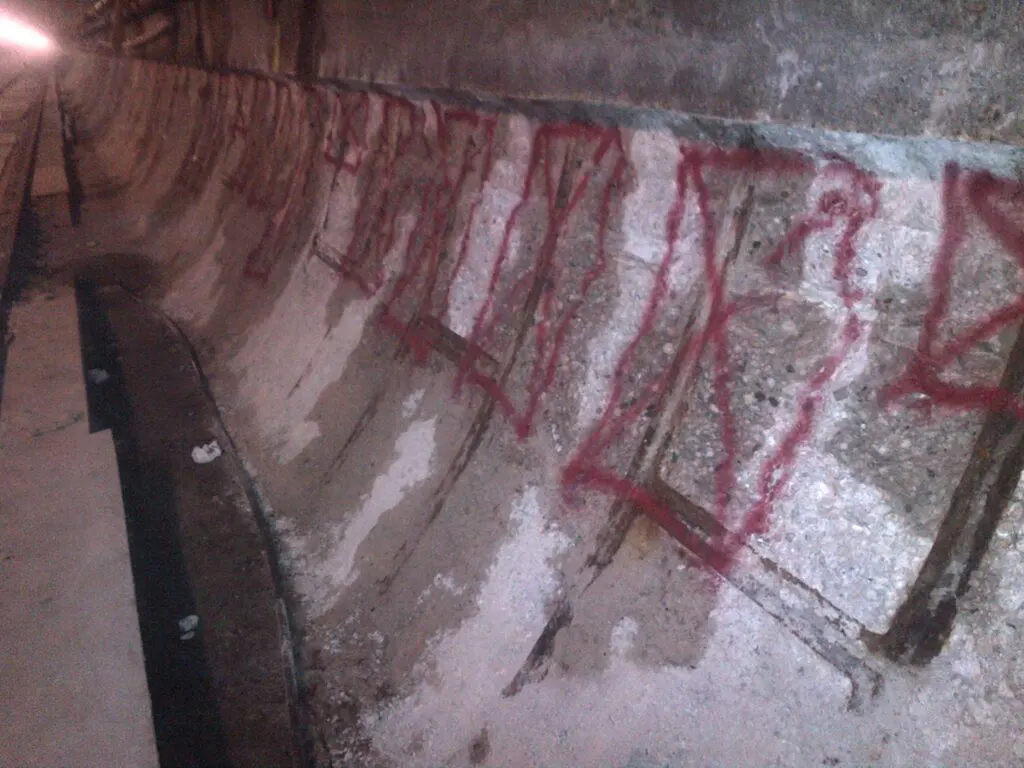
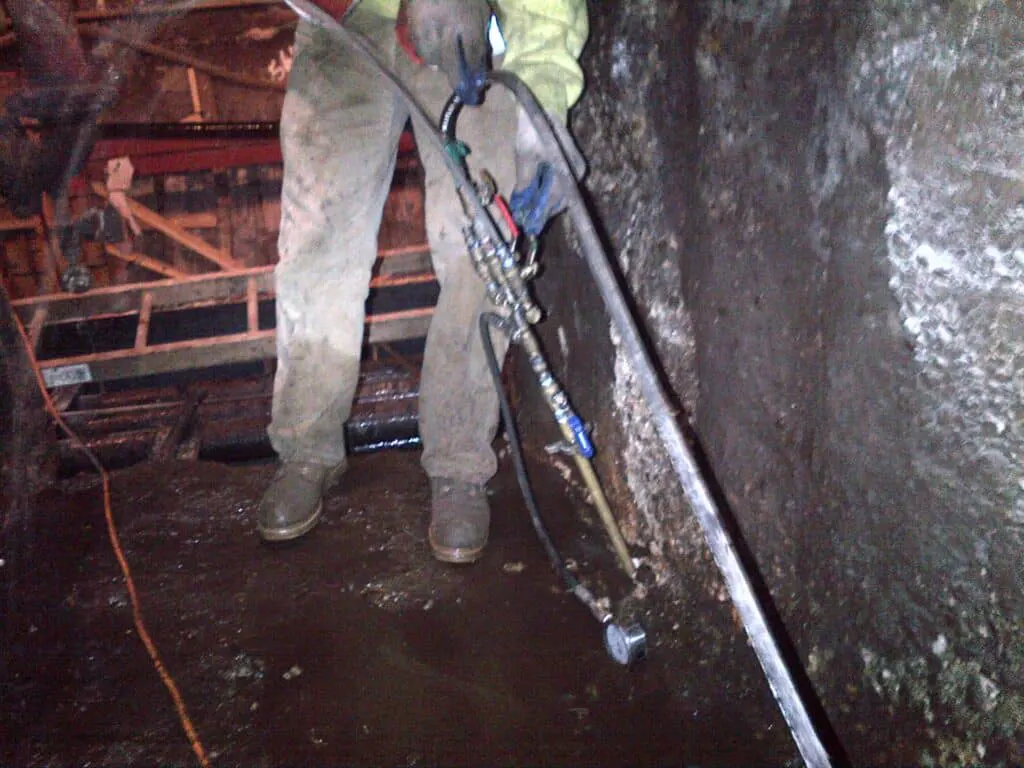
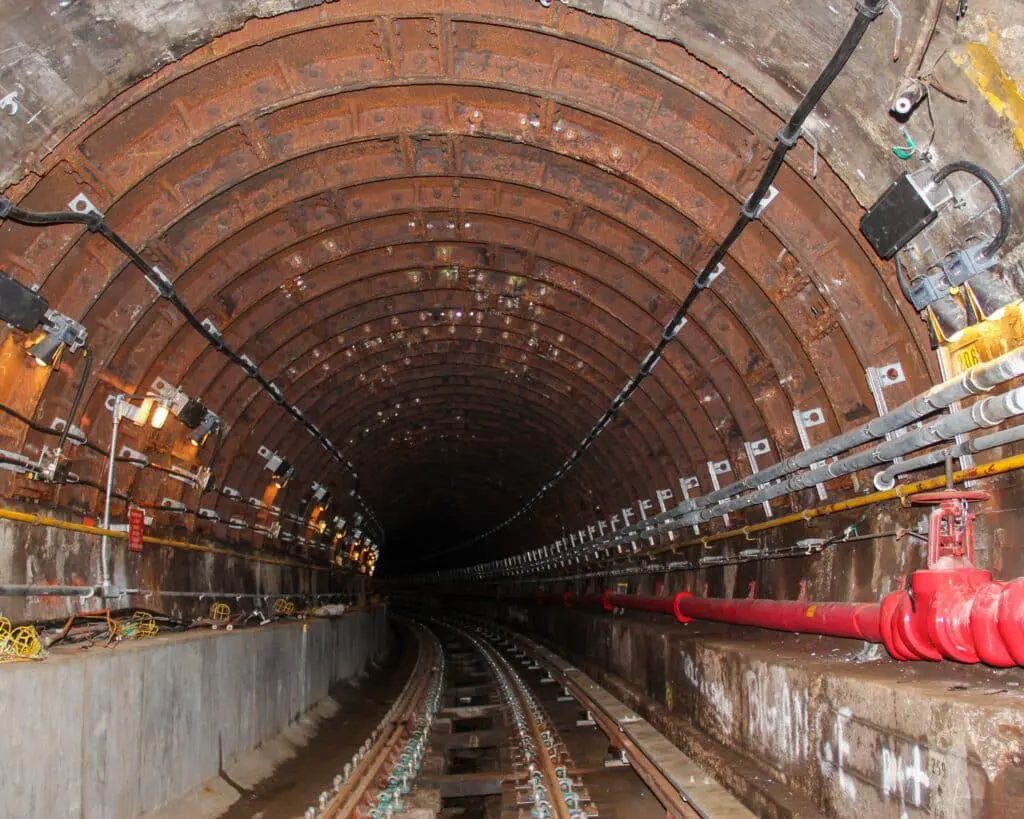
For more information

Innovative leak remediation with NOH2O® through cast iron tunnel liner
Drilled and injected NOH2O® through patented bolts
Work performed during regularly scheduled track outages
No train service disruption during revenue service hours
The leak mitigation for Steinway Tube involved sealing leaks in the tunnel liner behind the existing electrical duct bench. The duct bench was demolished, and wet spots identified. In areas where the liner consisted of cast-in-place concrete, holes were drilled through the liner to inject NOH2O® behind the liner. Where the liner consisted of cast-iron segments, the concrete was chipped out to expose leaking bolts. The leaking bolts from the original construction were replaced with patented stainless steel bolts of the same diameter that allow injection of NOH2O® into the annulus around bolt hole and bolt. The NOH2O® injected through the bolts also sealed adjacent leaks in the segment joints.
Sovereign provided a four-man grouting crew and material to seal the leak documented during the duct bank demolition. The leak was located at the transition between the Manhattan horseshoe and cast-iron sections and originated at the concrete-rock interface and behind a steel liner.
Work was completed on February 7, 2015 in one 12-hour shift using 6 drilled holes, 550 liters of NOH2O®, 80 liters of Inhibitor, and 140 liters of Actical 500®. Finally, new concrete duct banks were cast.
For more information

Over a period of several weeks, the No. 2 Shaft experienced an increased water make from 90 liters per minute to over 410 liters per minute. SCEM66 was used to successfully reduce the total inflow to less than 15 liters per minute.
For more information

The 350-meter deep Northern Up-Cast Shaft of this mine was raise bored to 4.1 meters diameter and, at time of completion, registered 1536 liters per minute of water ingress. Apart from excessive pumping costs, this large volume in the shaft decreased fan efficiency and caused problems with water spray onto surface electrical power stations and surrounding vegetation. It was critical to eliminate airborne water in the shaft that would become entrained in the up-cast airflow.
Geological investigations suggested that water was entering the shaft in two zones (145 meter and 179 meter depths) and that it was unlikely that water inflows would be encountered at depths greater than 200 meters. SCEM66 was applied from a 2 deck stage suspended from an air winch capable of descending to a 200 meter depth. Shaft inspection revealed water ingress was from both vertical and horizontal cracks and fissures.
Water sealing by drilling and injecting was systematically carried out from the 114 meter level downward. Within one week all the airborne water was eliminated and measurement in the shaft at the 200 meter depth showed residual water make of 75 liters per minute. Additional measurements at a V-notch weir at the base of the shaft indicated water make of 335 liters per minute, indicating that leakage was occurring below the 200 meter depth.
Some six weeks later, readings at the bottom of the shaft indicated water ingress had increased to 970 liters per minute. In December 1992, Sovereign remobilized and inspected the entire shaft. The inspection revealed that the raise boring had intersected an HQ diamond drill hole at the 273 meter depth. The drill hole was discharging more than 600 liters per minute at the time of the inspection. The inspection also revealed that the water table around the shaft had recovered after the first application of SCEM66 and the water table was now at a shallower level situated above where grouting had previously occurred.
In June 1993, the top 130 meters of the shaft were lined with reinforced concrete. At that time, the diamond drill hole and other previously untreated water ingress zones were sealed with SCEM66. Total shaft water make was reduced to less than 120 liters per minute.
For more information

The new Penzance/St. Ives Sewerage Scheme in Cornwall required the sinking of a 6.1-meter diameter shaft to a depth of 60 meters on the shore at Gwithian, to provide access to a 2.1 km long outfall tunnel to be driven out beneath St. Ives Bay. Initial ground support through the upper water-bearing sands, gravels and fractured killas (metamorphosed sedimentary rock marginal to igneous intrusions) was by precast concrete sections.
High water inflows were encountered while sinking through the water-bearing strata. Despite attempts to control water through backwall grouting with cement, the water make increased to over 1560 liters per minute at the base of the water-bearing interval at 35 meters depth. Due to the high inflow rate, cement grouting, even with use of bridging materials, was unsuccessful.
SCEMm66 was modified to yield the desired coagulation characteristics in the fast-flowing, saline water. After injection through the segmental lining over a 9 shift period, the water inflow was reduced from 1560 liters per minute to 114 liters per minute.
For more information

Late in 1990, the South-East and South-West 1.83-meter diameter ventilation raise bore holes intersected water at 40 liters per minute and 60 liters per minute, respectively. The water table cone of depression was of concern, because local residences were entirely dependent on groundwater for potable water.
Over a two-week period, the mine unsuccessfully attempted to ring drill and grout by conventional methods. Sovereign mobilized, and sealed the South-West raise bore with SCEM66 in two days. Using longer holes to extend through incompetent ground, the South-East raise bore was sealed in four days under adverse conditions with heavy rain and water-logged turf.
For more information

Broken Hill No. 5 Ventilation Shaft. During sinking of a new shaft, water entered the pilot hole at 300 liters per minute, despite a major cement grouting program from surface. Reaming of the pilot hole to 6.5 meters increased the flow to 850 liters per minute. In-shaft grouting with SCEM66 during 1990 reduced the shaft water make to 15 liters per minute.
Broken Hill Raise Bore Holes. The ingress of water into two 2.4-meter diameter raise bore holes (one each used for transport and ventilation) was reduced using SCEM66 from 60 liters per minute to less than 5 liters per minute in one shaft and from 120 liters per minute to less than 20 liters per minute in the other.
For more information

Groundwater in dolomite was intersected from 100 meters to 600 meters depth. At 600 meters, the inflow into the shaft was 624 liters per minute. After 60 days of sealing, the inflow was reduced to 138 liters per minute, allowing normal shaft sinking operations to proceed.
A subsequent contract was awarded to apply SCEM66 to some 30 discrete areas of the tunnel where inflows varied between 1080 liters per minute to less than 1 liter per minute. These areas were all successfully treated with SCEM66 in 10 shifts.
For more information

The tunnel, which carries traffic on the M25 London Orbital Motorway under the Thames River, started leaking in several places. Total water make was 350 liters per minute. After several unsuccessful attempts by others to adequately seal the water, Sovereign mobilized in September 1989 to perform a trial sealing exercise on the worst 100-meter section. Within 6 shifts, the total water make in the tunnel was reduced to an acceptable rate of 125 liters per minute. An August 1992 inspection certified that no further leaks had developed in the 100-meter SCEM66 trial area.
For more information

During November 1988 the sinking crew at No. 1 Shaft reported intersecting water in a pilot hole at 4 level plat development. Attempts to pump cementitious grout via a telescopic packer proved unsuccessful. Drilling of additional pilot holes, together with the grouting program, fractured the surrounding rock so that what was only an intersection in a pilot hole subsequently became a general breakout through numerous fractures in the face and side-wall. Water inflow increased to 850 liters per minute, and water temperature was 55° C which was 2° C higher than the virgin rock temperature in the area.
In view of high hydrostatic pressure (17 MPa), the relatively weak tensile strength of the rock (14 MPa) and proximity to the face, it was decided to install a more remote seal closer to the source of the water. Numerous holes were then drilled into the fracture and grouted, but flow velocities within the water-bearing fractures were simply too high for emplacement of an effective cement grout seal.
During January 1989, Sovereign was contracted to seal the water ingress. Three strategically placed holes were drilled. Dye testing was performed to confirm adequate connection with the water-bearing fractures. SCEM66 with activator was injected, and the sealing operation was successfully completed within a single 8-hour shift.
For more information

A large network of flooded and abandoned workings were causing a rise in ground water levels and leaking into the operating section of Monktonhall Colliery. An extensive cement grouting program was tried but failed to stop the increasing inflows. Some 220 tons of cement were used during a period of nearly one year.
No. 1 Shaft. By June 1988 the water make in the shaft interval 0-1015 feet was 2,880 liters per minute and increasing quickly. It was then decided to apply SCEM66 in an effort to reduce the water make to 450 liters per minute. Grouting started on June 7 and by July 21 the water make from this same shaft interval had been reduced by 96% to 104 liters per minute using 15,000 liters of SCEM66.
No. 2 Shaft. Following the successful sealing of the No. 1 Shaft, it was decided to treat the No. 2 Shaft. Because of their proximity, the water make from the No. 2 Shaft had already decreased from grouting of the No. 1 Shaft. When work commenced on August 29, 1988 water inflow in the shaft interval 0-986 feet was 785 liters per minute. After SCEM66 grouting, the water make from the same shaft interval was reduced by 85% to 110 liters per minute by October 13, 1988. Additional work was then undertaken in the shaft interval 1000-1400 feet where inflows were also reduced from 188 liters per minute to 47 liters per minute.
For more information

The shaft was sunk through 236 m of Transvaal Dolomite Formation. No pre-grouting was undertaken from surface, and pilot drilling and cement grouting from shaft bottom during sinking did not stop the serious inflow of water. In 1981 two badly fractured areas were identified at depths of 50-53 meters and 120-125 meters below the collar. SCEM66 was used and a well-planned grouting operation carried out. Inflow was cut from 220,000 liters per day to 20,000 liters per day – better than 89% improvement. The shaft was inspected again in June 1984, and it was gratifying to assess the efficacy of the SCEM66 system as the shaft barrel was now completely dry.
Underground storage dams were sealed at the No. 8 and No. 9 shafts.
For more information

In 1979, the sinking operation of the M/M shaft was delayed due to excessive high volume water ingress at pressures exceeding 700 psi (about 50 bar). Grouting of this shaft was the first high pressure underground water ingress problem solved with SCEM66 (now known as NOH2O). All major leaks in the shaft lining were successfully grouted using 10 mm hydraulic injectors. The shaft was inspected 10 month later, and there were no signs of deterioration or leakage in the areas treated.
For more information
